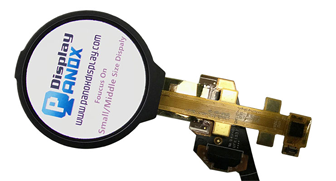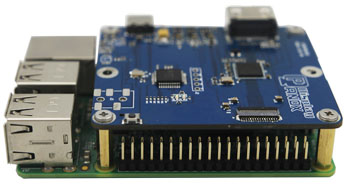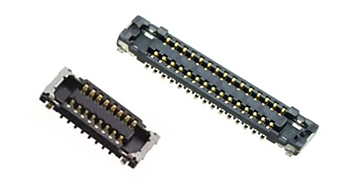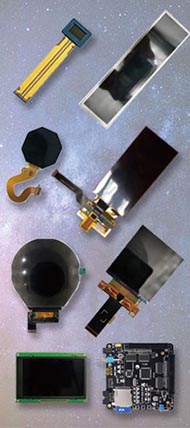LEDs (Light Emitting Diodes) and VCSELs (Vertical-Cavity Surface-Emitting Lasers) are both semiconductor light sources but differ fundamentally in structure, emission characteristics, efficiency, and applications. LEDs emit incoherent, broad-spectrum light from a small active region, while VCSELs produce coherent, narrow-spectrum laser light vertically from the surface, offering higher power, faster modulation, and superior beam quality.
What is an LED and how does it work?
A Light Emitting Diode (LED) is a semiconductor device that emits light when an electric current passes through it. The active region where electrons recombine with holes emits photons, producing light of a specific wavelength depending on the semiconductor material composition. LEDs emit incoherent light with a broad spectral bandwidth and over a wide angle, typically around 60° or more.
LEDs are simple, robust, and cost-effective light sources widely used in indicators, displays, general lighting, and some sensing applications. Their small active region allows heat to dissipate quickly, making them reliable for continuous operation at moderate power levels.
What is a VCSEL and how does it differ from an LED?
A Vertical-Cavity Surface-Emitting Laser (VCSEL) is a semiconductor laser diode that emits light vertically from the chip surface rather than from its edge. Unlike LEDs, VCSELs have a resonant optical cavity formed by distributed Bragg reflectors above and below the active region, enabling stimulated emission and coherent laser output.
Key differences include:
-
Emission type: VCSELs emit coherent, monochromatic laser light with a narrow spectral linewidth, whereas LEDs emit incoherent, broad-spectrum light.
-
Beam profile: VCSELs produce a narrow, low-divergence beam with circular symmetry, facilitating efficient coupling into optical fibers and systems. LEDs emit a wider, Lambertian beam.
-
Power and efficiency: VCSELs achieve higher on-axis optical power at lower drive currents and offer better power conversion efficiency in integrated systems.
-
Modulation speed: VCSELs support high-speed modulation (hundreds of MHz), suitable for data communication, while LEDs are limited to tens of MHz.
How do the active regions of LEDs and VCSELs compare?
The active region is where light is generated in both devices, but their sizes and designs differ significantly:
| Feature | LED | VCSEL |
|---|---|---|
| Active Region Size | Very small | Larger, with distributed Bragg reflectors |
| Heat Dissipation | Efficient due to small size | Requires thermal management due to higher power density |
| Emission Direction | Broad, Lambertian (all directions) | Vertical, well-defined cavity axis |
The larger active region and resonant cavity in VCSELs allow for stimulated emission and laser action, while LEDs rely on spontaneous emission.
Why are VCSELs more efficient than LEDs in sensing applications?
VCSELs offer several efficiency advantages over LEDs:
-
Higher radiant intensity: VCSELs concentrate light into a narrow beam, increasing usable power in the target direction.
-
Better coupling: Their circular, low-divergence beam couples more efficiently into optical systems and fibers.
-
Lower power consumption: For the same detected signal strength, VCSELs require less drive current.
-
Faster modulation: VCSELs support modulation speeds up to hundreds of MHz, enabling higher resolution and faster response in sensing.
For example, in automotive driver monitoring systems, VCSEL-based illuminators can deliver nearly double the radiant intensity within the field of view compared to LEDs, while consuming about half the power.
How do LEDs and VCSELs differ in modulation speed and communication?
Modulation speed is critical in optical communication and sensing:
-
LEDs: Limited to modulation frequencies below ~30 MHz due to spontaneous emission and carrier recombination dynamics.
-
VCSELs: Can be modulated at hundreds of MHz or even GHz, thanks to stimulated emission and resonant cavity design.
This speed difference makes VCSELs suitable for high-speed data transmission (1 Gb/s and above) in fiber optic networks, whereas LEDs are typically restricted to low-speed or indicator applications.
Which applications are best suited for LEDs versus VCSELs?
| Application Area | LED Suitability | VCSEL Suitability |
|---|---|---|
| General lighting | Excellent | Limited |
| Indicator lights | Excellent | Limited |
| Short-range sensing | Good | Excellent |
| High-speed data comms | Limited (up to 200 Mb/s) | Excellent (1 Gb/s to 25 Gb/s and beyond) |
| 3D sensing and LiDAR | Limited due to beam divergence | Preferred for precision and power |
| Optical fiber coupling | Less efficient due to wide beam | Highly efficient due to narrow beam |
Panox Display incorporates both LED and VCSEL technologies in their custom display and sensing solutions, enabling clients to select the optimal light source for their specific application needs.
How do the spectral outputs of LEDs and VCSELs compare?
LEDs emit light over a broad spectral range, often tens of nanometers wide, resulting in incoherent light with lower spectral purity. VCSELs emit light with a very narrow linewidth, typically less than a nanometer, producing coherent laser light.
This spectral purity allows VCSELs to be used in applications requiring precise wavelength control and minimal interference, such as high-resolution sensing and optical communication.
What are the thermal management considerations for LEDs and VCSELs?
Due to their small active regions and spontaneous emission, LEDs generally dissipate heat efficiently and operate reliably at moderate power levels without complex cooling.
VCSELs, generating higher power densities and coherent light, require more careful thermal management to maintain wavelength stability and prevent damage. Packaging solutions often include heat sinks and temperature control to ensure consistent performance.
How does Panox Display support OEMs with LED and VCSEL integration?
Panox Display offers comprehensive OEM services integrating LEDs and VCSELs with their custom OLED and LCD display modules, controller boards, and touch panels. This enables startups and established companies to develop advanced sensing, communication, and display systems with optimized light sources.
By sourcing premium components and providing tailored solutions, Panox Display ensures high-quality, reliable products that meet diverse industry requirements, from wearable devices to automotive and industrial sensors.
Can LEDs and VCSELs be combined in hybrid systems?
Yes, hybrid systems leveraging both LEDs and VCSELs can optimize performance by using LEDs for broad illumination and VCSELs for precise, high-speed sensing or communication. This approach balances cost, power consumption, and functionality in complex devices.
Panox Display Expert Views
“Understanding the fundamental differences between LEDs and VCSELs is crucial for engineers designing next-generation optical systems. At Panox Display, we emphasize selecting the right light source to maximize efficiency, reliability, and performance. Our expertise in integrating both LEDs and VCSELs into custom display and sensing modules allows our clients to innovate confidently across telecommunications, automotive, and industrial sectors, ensuring their products meet rigorous demands with cutting-edge technology.”
Conclusion
LEDs and VCSELs serve distinct but complementary roles in modern photonics. LEDs offer simplicity, broad emission, and cost-effectiveness for general lighting and low-speed sensing. VCSELs provide coherent, high-power, and high-speed laser emission ideal for data communication, precise sensing, and 3D imaging. Understanding their differences in structure, emission, efficiency, and applications enables informed design choices. Panox Display’s commitment to premium component sourcing and tailored integration supports clients in harnessing both technologies for innovative, high-performance solutions.
















